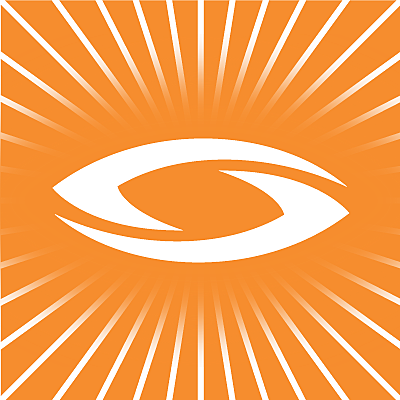Healthcare industries that have the need for visual assistance for life science and medical devices. For healthcare technology industries, visual assistance helps managing the installation, maintenance, or repair of medical equipment installed.

Augmented Reality for Medical Devices
Autor:
What is AR powered visual support?
Using AR-powered visual support, an organization’s most skilled technicians can handle more jobs remotely, giving them the freedom to focus on high value customers, complex repairs and supporting technicians in the field. Our enterprise-grade platform helps you collect, share and deliver service knowledge across your entire organization so that all technicians can work at their maximum potential, regardless of their experience level or expertise.
What are the benefits of AR for Medical Devices?
On average SightCall for Life Sciences and Medical Device customers see:
- 81% improved first time fix rates
- 69% decrease in resolution time
- 50% reductions in truck rolls
- 41% decreased training time
How is AR used for Medical Device Remote Support?
INCREASE EXPERT PRODUCTIVITY
SightCall cuts down on the time, travel and resources needed to fix problems. Empowers your experts to solve problems quickly and accurately so that they spend less time on administrative tasks and more time on patient outcomes.
REDUCE DEVICE DOWNTIME
With access to AR work instructions and visual assistance, technicians are empowered to accomplish work orders. Using SightCall for remote triage ensures that when a technician arrives onsite, they will have the tools and knowledge that are needed to complete the task efficiently.
DELIVER ON SERVICE EXPECTATIONS
See what your customer or patient sees and provide fast, personalized support that improves the customer experience.
What features are important for Medical Device AR remote support?
Visual assistance offers a robust toolkit that’s different than video conferencing software such as Zoom or Facetime. The ability to use AR annotations to give instructions helps solve problems while Document Share means that techs don’t have to carry manuals. Unparallel privacy and security including HIPPA compliance and automatic face blurring keeps all company and customer data confidential.
Learn how AR visual support for medical devices has helped these companies
Case Study 3: Major hospital expands patient reach with AR-powered telehealth
Augmented reality can also benefit healthcare systems aiming to reach underserved or distant patients.
For instance, a major urban hospital network features two teaching hospitals with 4,000 employees and 625 medical staff. Among all its facilities, it averages more than 3,000 births and 80,000 emergency department visits annually. Additionally, its online patient portals hold more than 30,000 individual accounts, and the network is particularly committed to harnessing the latest technology to engage and care for vulnerable patient groups throughout the region.
Administrators had wanted to launch telehealth and virtual physician visits for several years but felt unsuccessful in realizing an effective and fully-integrated system all parties were on board with using.
Previously, the hospital network tried several different platforms to manage its care advice line, along with the limited number of telemedicine calls they facilitated monthly. With each, it encountered complicated training and licensing systems and little to no integration with its Salesforce CRM software and online patient accounts.
Some medical staff were also resistant to taking bigger steps toward virtual visits, acknowledging additional digitization as a strong idea in theory, but having not seen anything that convinced them it was a platform to transform patient care.
These factors worked against a larger rollout of remote solutions. The client’s patient advice line fielded a few hundred calls a week, while telehealth calls hovered around 80 a month. Meanwhile, its long-term vision of strategically employing digital data to reach vulnerable patients and address health disparities in the region was restricted by the limited tracking systems of the platforms it used.
Embracing augmented reality-powered visual assistance, the hospital network was drawn to the seamless integration with its existing Salesforce Health Cloud system. The network’s IT specialists valued the ability to go live with nearly unlimited numbers of users in minimal time, as well as upscale call capacity at short notice.
Physicians and nurses appreciated the platform was device-agnostic, with high-definition picture quality and low-bandwidth requirements. With AR, they could guide patients through solutions to problems in real-time, using tools like annotation, screen sharing, and remote activation of the patient’s smartphone light.
A live telehealth visit could take place at the same time the Salesforce patient portal was being navigated, without any interruption or screen changes. This meant the written patient assessment could be completed or in-person visits could be scheduled simultaneously with the virtual appointment. Alternatively, data could be extracted from the call and fed back to the Salesforce platform, with no manual entry required, using optical character recognition.
In fact, the hospital’s adoption of augmented reality tools took hold just in time for the onset of COVID-19 in spring 2020. When the pandemic hit the Midwest, the network established a dynamic command center in a single day. An average of 80 telehealth calls a month exploded to 18,000 calls in April 2020 alone.
Create easier, faster and safer care experiences
The use of AR-powered visual support allows patients to become more confident participants in the care that keeps them healthy and safe – whenever and wherever they are.
SightCall’s enterprise-grade visual support platform harnesses the power of AR to allow both patients and the support workers who serve them to operate at maximum, regardless of their experience levels with a device or expertise. To learn more about this level of healthcare transformation, request a SightCall demo.


